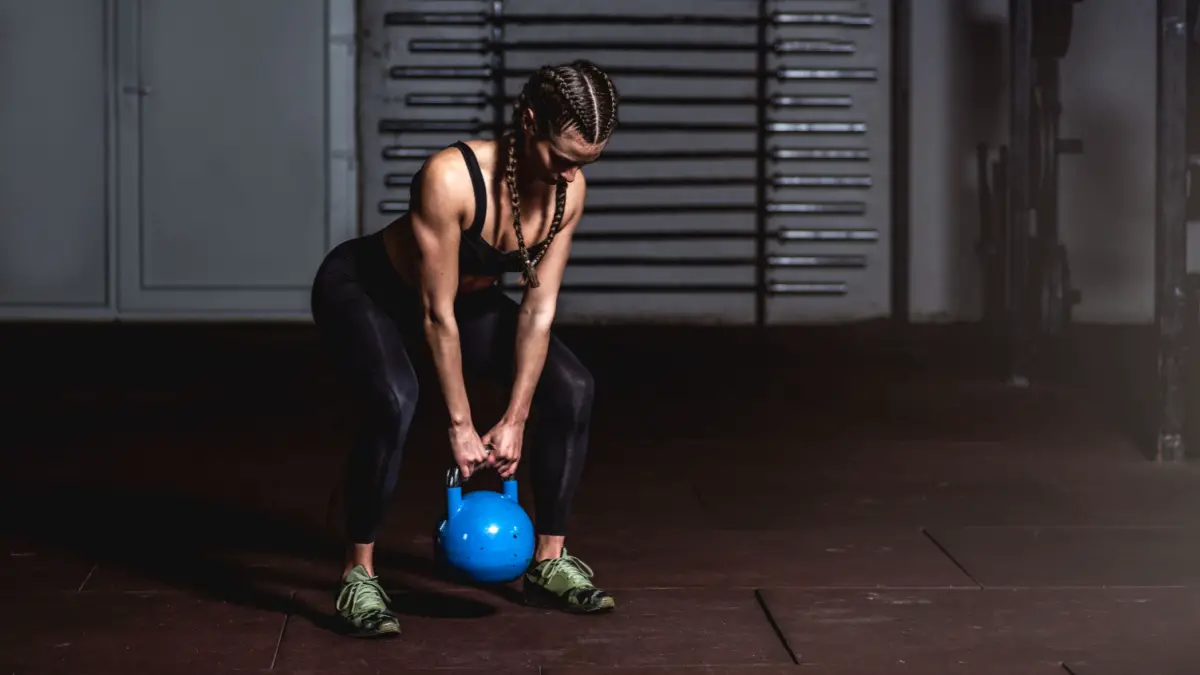Deadlifting is a strenuous and challenging exercise that tests your physical strength and mental toughness. In strength and conditioning, few activities can match the kettlebell deadlift in effectiveness and versatility.
Whether you’re an athlete, fitness enthusiast, or someone seeking to enhance their overall well-being, incorporating kettlebell deadlifts into your routine can yield remarkable results.
The Anatomy of Kettlebell Deadlifts
The kettlebell deadlift is a full-body exercise primarily targeting the lower back, glutes, hamstrings, and core muscles. It’s a variation of the traditional deadlift, performed with a kettlebell between the feet. The movement involves:
- Hinging at the hips.
- Maintaining a neutral spine.
- Lifting the kettlebell from the ground to a fully upright position.
The key to its effectiveness is engaging multiple muscle groups simultaneously, improving strength, stability, and mobility.
The most common type of deadlift is the conventional deadlift, where you grip the bar with your hands outside your legs. However, other types exist, such as trap bars, sumo, or single-leg deadlifts. Each class has unique benefits; you can choose the one that suits your body type.
Unlocking Your Deadlift Potentials.
Strength Development
Kettlebell deadlifts are a potent tool for building functional strength. As you gradually increase the weight, your muscles adapt to the load, improving muscle growth and overall power. Are heavily engaged, enhancing your ability to generate force quickly and perform daily activities.
Core Engagement
A strong core is the foundation of any physical activity. Kettlebell deadlifts demand significant core engagement to maintain proper posture throughout the movement, and this helps to prevent jerky or sudden movements. This strengthens your abdominal muscles, improves spinal stability, and reduces the risk of injury.
Enhanced Grip Strength
A solid grip is essential for various activities, from lifting heavy objects to performing exercises like pull-ups. Kettlebell deadlifts require you to hold the kettlebell, improving your grip strength.
Improved Posture
The importance of maintaining a neutral spine during kettlebell deadlifts can have a positive impact on your posture. It aids in making your spine’s supporting muscles stronger; you’ll be better equipped to stand, sit, and move with proper alignment, thereby reducing the likelihood of developing chronic back pain, among other things.
Incorporating Kettlebell Deadlifts into Your Routine
Deadlifting is a compound movement that involves using multiple muscles working together. Incorporating assistance exercises that isolate specific muscle groups can help strengthen them and improve your deadlift technique. For example, incorporating exercises like Romanian deadlifts, leg curls, and hyperextensions can help build lower back, hamstring, and glute strength. Here are some ways you include kettlebell deadlift into your routine.
Warm-up
A thorough introduction, including kettlebell deadlifts, is essential before any exercise. This primes and relax your muscles for the movement, reduces the possibility of injury and gets your body ready for the workout to come.
Progressive Overload
Progressive overload is an essential aspect of deadlifting. To continually unlock your potential, progressively increase the weight of the kettlebell over time. Gradually challenging your muscles with heavier loads encourages growth and development.
Rest and Recovery
Enough rest and recovery are crucial for maximizing your potential. Ensure you sleep enough, stay hydrated, and allow your muscles time to repair and grow.
Variation
While the traditional kettlebell deadlift is a fundamental exercise, there are several variations you can explore, such as sumo deadlifts or single-leg deadlifts and trap bar deadlifts. These variations target different muscle groups and provide a well-rounded workout.
Conclusion
The kettlebell deadlift is a dynamic exercise that offers many benefits for individuals seeking to unlock their physical potential. This compound movement can transform your fitness journey by incorporating proper technique, from strength development to improved posture and cardiovascular health.
